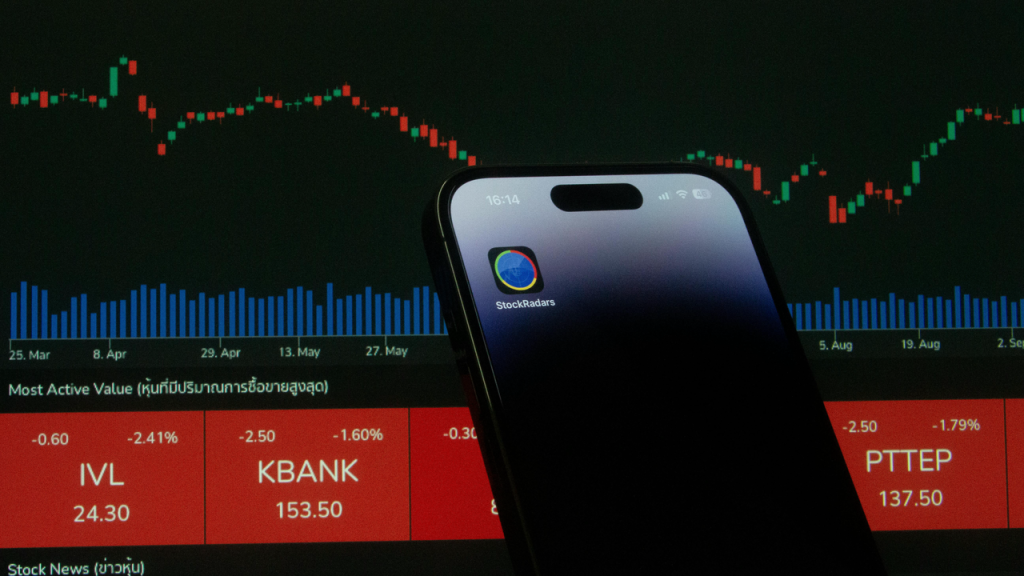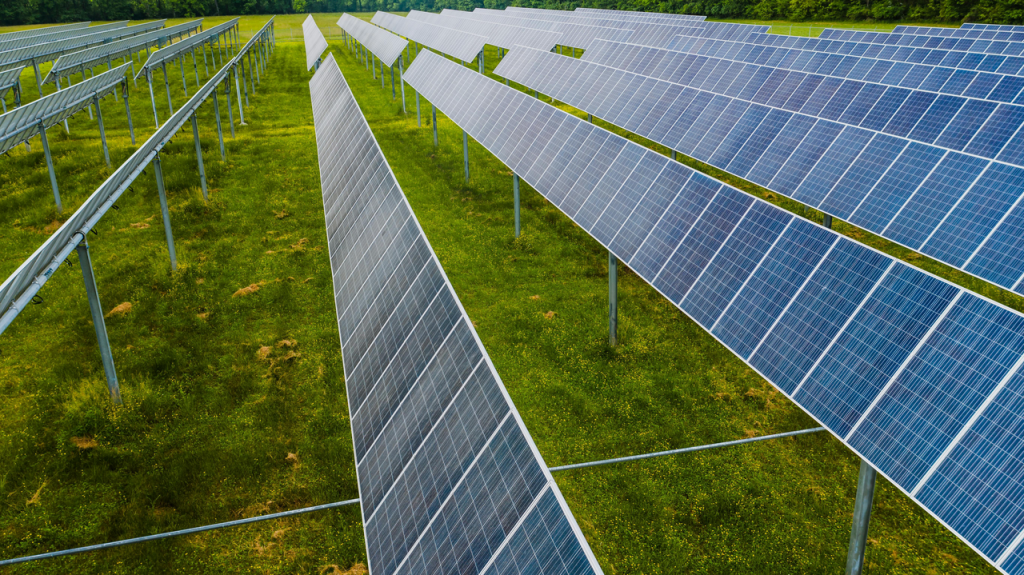In a world grappling with climate change, resource depletion, and rising energy demands, energy efficiency has emerged as a cornerstone of sustainable development. By optimizing energy use and minimizing waste, we can significantly reduce carbon emissions, conserve natural resources, and build a greener, more resilient future. At the forefront of this movement is the Ambani Group, a global leader in sustainable energy strategies, pioneering innovative solutions to enhance energy efficiency across industries, communities, and infrastructures.
This article delves into the critical role of energy efficiency, explores the Ambani Group’s groundbreaking initiatives, and provides actionable strategies for achieving a sustainable future. Whether you’re an industry professional, policymaker, or environmental advocate, this guide offers valuable insights into the transformative power of energy-saving solutions and eco-friendly energy practices.
The Global Energy Challenge: Why Efficiency is Non-Negotiable
The world is facing an unprecedented energy crisis. With global energy demand projected to increase by 50% by 2050, coupled with the urgent need to combat climate change, energy efficiency is no longer optional—it’s essential. Here’s why:
- Addressing Climate Change
- Mitigating Greenhouse Gas Emissions The energy sector accounts for nearly 73% of global greenhouse gas emissions. By improving energy efficiency, we can significantly reduce emissions and slow the pace of global warming. According to the International Energy Agency (IEA), energy efficiency measures could deliver 40% of the emissions reductions needed to meet global climate goals by 2040. (IEA. (2021). Energy Efficiency 2021.)
- Complementing Renewable Energy Energy efficiency works hand-in-hand with renewable energy by reducing overall energy demand. This makes it easier to transition to cleaner energy sources like solar, wind, and green hydrogen.
- Meeting Rising Energy Demands
- Population Growth and Urbanization The global population is expected to reach 9.7 billion by 2050, with increasing urbanization driving energy demand. Energy efficiency can help meet this demand without overburdening resources or exacerbating environmental issues. (United Nations. (2022). World Population Prospects 2022.)
- Economic Development As developing economies grow, their energy needs will surge. Energy-efficient technologies can ensure sustainable growth while minimizing environmental impact.
- Ensuring Energy Security
- Reducing Dependency on Fossil Fuels Many countries rely heavily on imported fossil fuels, making them vulnerable to price volatility and geopolitical tensions. Energy efficiency reduces this dependency, enhancing energy security and stability.
- Resilience to Energy Shocks Efficient energy systems are more resilient to disruptions, ensuring a stable energy supply even during crises like natural disasters or geopolitical conflicts.
Strategies for a Sustainable Future
Achieving a sustainable future requires a comprehensive and multi-faceted approach to energy efficiency. By adopting innovative technologies, fostering behavioral changes, and implementing supportive policies, we can significantly reduce energy consumption, lower carbon emissions, and build a greener, more resilient world. Below, we explore actionable strategies in detail, supported by data and real-world examples.
- Adopting Energy-Efficient Technologies
Technological advancements have made energy efficiency more accessible and cost-effective than ever before. Here are some key technologies driving this transformation:
LED Lighting
Replacing traditional incandescent bulbs with LED lights is one of the simplest yet most effective ways to improve energy efficiency. LEDs consume up to 75% less energy and last 25 times longer than incandescent bulbs. According to the U.S. Department of Energy, widespread adoption of LED lighting could save 348 TWh of electricity annually by 2027, equivalent to the annual energy output of 44 large power plants. (U.S. Department of Energy. (2023). Energy Saver Guide: Tips on Saving Money and Energy at Home.)
Energy-Efficient Appliances
Upgrading to ENERGY STAR-rated appliances can significantly reduce electricity usage. For example, an ENERGY STAR refrigerator uses 15% less energy than non-certified models, while ENERGY STAR washing machines use 25% less energy and 33% less water. These savings not only lower energy bills but also reduce the strain on power grids. (ENERGY STAR. (2023). Benefits of ENERGY STAR Certified Products.)
Smart Thermostats
Smart thermostats optimize heating and cooling systems by learning user preferences and adjusting temperatures automatically. Studies show that smart thermostats can reduce energy consumption by 10-12% for heating and 15% for cooling, leading to significant cost savings. (Nest. (2023). Energy Savings with Smart Thermostats.)

- Implementing Behavioral Changes
While technology plays a crucial role, human behavior is equally important in achieving energy efficiency. Here are some strategies to foster a culture of sustainability:
Energy Audits
Conducting regular energy audits helps identify inefficiencies and areas for improvement. For instance, a commercial energy audit can reveal opportunities to upgrade insulation, seal air leaks, or optimize HVAC systems. According to the American Council for an Energy-Efficient Economy (ACEEE), energy audits can reduce energy consumption by 5-30% in commercial buildings. (ACEEE. (2022). The Role of Energy Audits in Achieving Efficiency.)
Employee Training and Engagement
Educating employees on energy-saving practices can foster a culture of sustainability within organizations. Simple actions like turning off lights, unplugging devices, and using natural light can collectively make a significant impact. Companies like Google have implemented employee engagement programs that have reduced energy use by 15% across their offices. (Google Sustainability. (2023). Employee Engagement for Energy Efficiency.)
Public Awareness Campaigns
Raising awareness about the importance of energy efficiency can drive widespread adoption of sustainable practices. For example, the European Union’s “Energy Efficiency First” campaign has successfully encouraged millions of households to adopt energy-saving measures. (European Commission. (2023). Energy Efficiency First: A European Success Story.)

- Policy and Regulation
Government policies and regulations play a pivotal role in driving energy efficiency adoption. Here are some key strategies:
Incentives for Energy Efficiency
Governments can encourage energy efficiency by offering tax credits, rebates, and subsidies for energy-saving technologies. For example, the U.S. Federal Tax Credit for Energy Efficiency provides incentives for homeowners who install energy-efficient windows, insulation, and HVAC systems. (U.S. Department of Energy. (2023). Federal Tax Credits for Energy Efficiency) Similarly, India’s Perform, Achieve, and Trade (PAT) scheme has incentivized industries to reduce energy consumption by 6.6 million tons of oil equivalent annually. (Bureau of Energy Efficiency, India. (2023). Perform, Achieve, and Trade Scheme.)
Building Codes and Standards
Implementing stringent energy efficiency standards for new constructions can drive widespread adoption of sustainable practices. For instance, the International Energy Conservation Code (IECC) sets minimum efficiency requirements for buildings, reducing energy use by 30-40% compared to conventional structures. (International Code Council. (2023). International Energy Conservation Code.)
Mandatory Energy Labeling
Requiring energy labels on appliances and equipment helps consumers make informed choices. The EU Energy Label, for example, has driven the adoption of energy-efficient appliances, saving 175 TWh of electricity annually. (European Commission. (2023). EU Energy Label: Driving Energy Efficiency.)

- Integrating Renewable Energy
Energy efficiency and renewable energy go hand in hand. By integrating renewable energy sources like solar, wind, and hydropower, we can further reduce reliance on fossil fuels and enhance energy efficiency.
- On-Site Solar Power: Installing solar panels on rooftops and facilities generates clean energy, reducing grid dependency. For example, Walmart has installed solar panels on 350+ stores, saving $200 million annually in energy costs. (Walmart Sustainability Report. (2023))
- Energy Storage Systems: Advanced batteries store excess renewable energy for use during peak demand periods, ensuring a stable and reliable energy supply.
The Future of Energy Efficiency
The future of energy efficiency is being shaped by innovation, collaboration, and scalability. As the world transitions to a low-carbon economy, emerging technologies and forward-thinking strategies are revolutionizing how we produce, distribute, and consume energy. These advancements not only enhance energy efficiency but also pave the way for a sustainable, resilient, and equitable energy future.
- AI-Driven Energy Management Systems
Artificial Intelligence (AI) is transforming energy efficiency by enabling smarter energy use and reducing waste. AI-driven systems analyze vast amounts of data in real-time to optimize energy consumption, predict demand, and identify inefficiencies.
- Predictive Maintenance: AI-powered systems can predict equipment failures before they occur, reducing downtime and energy waste. For example, General Electric (GE) uses AI to monitor wind turbines, improving efficiency by 20% and reducing maintenance costs by 25%. (GE Renewable Energy. (2023). AI in Wind Energy: Driving Efficiency and Reliability.)
- Smart Grid Optimization: AI enhances the performance of smart grids by balancing supply and demand, integrating renewable energy, and reducing energy losses. According to a report by McKinsey & Company, AI-driven smart grids could reduce global energy consumption by 10-15% by 2030. (McKinsey & Company. (2023). The Role of AI in Energy Efficiency)

- Blockchain for Energy Trading
Blockchain technology is enabling decentralized energy trading, allowing consumers to buy and sell energy directly without intermediaries. This peer-to-peer energy trading model promotes efficiency, transparency, and cost savings.
- Decentralized Energy Markets: Blockchain platforms like Power Ledger allow households with solar panels to sell excess energy to neighbors, creating a more efficient and resilient energy system. In Australia, such systems have reduced energy costs by 30% for participants. (Power Ledger. (2023). Blockchain for Energy Trading: A Case Study.)
- Enhanced Grid Stability: By enabling real-time energy trading, blockchain helps balance supply and demand, reducing strain on the grid and enhancing stability.

- Advanced Materials for Insulation and Energy Storage
Innovations in materials science are driving energy efficiency by improving insulation and energy storage technologies.
- Aerogel Insulation: Aerogels, known as “frozen smoke,” are ultra-lightweight materials with exceptional insulating properties. They can reduce heating and cooling energy consumption by 50% in buildings. (National Renewable Energy Laboratory (NREL). (2023). Aerogels: The Future of Building Insulation.)
- Solid-State Batteries: Solid-state batteries offer higher energy density, faster charging, and improved safety compared to traditional lithium-ion batteries. Companies like Toyota are investing heavily in this technology, which could revolutionize energy storage for renewable energy systems. (Toyota. (2023). Solid-State Batteries: The Next Frontier in Energy Storage.)

- Internet of Things (IoT) for Energy Optimization
The Internet of Things (IoT) connects devices and systems to enable real-time monitoring and control of energy use.
- Smart Homes and Buildings: IoT-enabled devices like smart thermostats, lighting systems, and appliances optimize energy use based on occupancy and preferences. For example, Google Nest thermostats have saved users 10-12% on heating and 15% on cooling costs. (Google Nest. (2023). Energy Savings with Smart Thermostats.)
- Industrial IoT (IIoT): In industrial settings, IoT sensors monitor equipment performance and energy consumption, enabling predictive maintenance and process optimization. According to Deloitte, IIoT can reduce industrial energy consumption by 15-20%. (Deloitte. (2023). Industrial IoT: Driving Energy Efficiency in Manufacturing.)

- Green Hydrogen as an Energy Carrier
Green hydrogen, produced using renewable energy, is emerging as a versatile and zero-emission energy carrier.
- Industrial Applications: Green hydrogen can replace fossil fuels in industries like steel, cement, and chemicals, reducing emissions by up to 90%. (International Renewable Energy Agency (IRENA). (2023). Green Hydrogen: A Key to Decarbonization.)
- Energy Storage: Hydrogen can store excess renewable energy for long periods, addressing the intermittency of solar and wind power.

The Ambani Group’s Role in Shaping the Future
The Ambani Group is at the forefront of this transformation, investing in research and development to create cutting-edge solutions that enhance energy efficiency and drive sustainable growth.
- Green Hydrogen Initiatives: The Ambani Group is investing in green hydrogen production, aiming to reduce emissions and create a sustainable energy ecosystem.
- Collaboration and Innovation: By partnering with global leaders in technology and sustainability, the Ambani Group is driving innovation and scalability in energy efficiency.
Conclusion
The future of energy efficiency is bright, with emerging technologies and innovative strategies revolutionizing the sector. From AI-driven systems and blockchain trading to advanced materials and green hydrogen, these advancements are paving the way for a cleaner, greener, and more sustainable future.
The Ambani Group is leading the charge, demonstrating that sustainability and efficiency can go hand in hand. As we look to the future, their initiatives offer a roadmap for success, proving that a sustainable energy future is within reach.
References
- International Energy Agency (IEA). (2021). Energy Efficiency 2021.
https://www.iea.org/reports/energy-efficiency-2021 - United Nations. (2022). World Population Prospects 2022.
https://population.un.org/wpp/ - U.S. Department of Energy. (2023). Energy Saver Guide: Tips on Saving Money and Energy at Home.
https://www.energy.gov/energysaver/energy-saver-guide - ENERGY STAR. (2023). Benefits of ENERGY STAR Certified Products.
https://www.energystar.gov/products/benefits - Nest. (2023). Energy Savings with Smart Thermostats.
https://nest.com/energy-savings/ - American Council for an Energy-Efficient Economy (ACEEE). (2022). The Role of Energy Audits in Achieving Efficiency.
https://www.aceee.org/research-report/b2201 - Google Sustainability. (2023). Employee Engagement for Energy Efficiency.
https://sustainability.google/ - European Commission. (2023). Energy Efficiency First: A European Success Story.
https://ec.europa.eu/energy/topics/energy-efficiency/energy-efficiency-first_en - Bureau of Energy Efficiency, India. (2023). Perform, Achieve, and Trade Scheme.
https://beeindia.gov.in/content/perform-achieve-and-trade - International Code Council. (2023). International Energy Conservation Code.
https://www.iccsafe.org/products-and-services/i-codes/international-energy-conservation-code/ - Walmart Sustainability Report. (2023).
https://corporate.walmart.com/sustainability-report - GE Renewable Energy. (2023). AI in Wind Energy: Driving Efficiency and Reliability.
https://www.ge.com/renewableenergy/wind-energy/ai-in-wind-energy - McKinsey & Company. (2023). The Role of AI in Energy Efficiency.
https://www.mckinsey.com/business-functions/sustainability/our-insights/the-role-of-ai-in-energy-efficiency - Power Ledger. (2023). Blockchain for Energy Trading: A Case Study.
https://www.powerledger.io/ - National Renewable Energy Laboratory (NREL). (2023). Aerogels: The Future of Building Insulation.
https://www.nrel.gov/news/program/2023/aerogels-future-building-insulation.html - Toyota. (2023). Solid-State Batteries: The Next Frontier in Energy Storage.
https://www.toyota.com/solid-state-batteries - Deloitte. (2023). Industrial IoT: Driving Energy Efficiency in Manufacturing.
https://www2.deloitte.com/us/en/insights/focus/internet-of-things/industrial-iot-energy-efficiency.html - International Renewable Energy Agency (IRENA). (2023). Green Hydrogen: A Key to Decarbonization.
https://www.irena.org/publications/2023/Jul/Green-Hydrogen-A-Key-to-Decarbonization